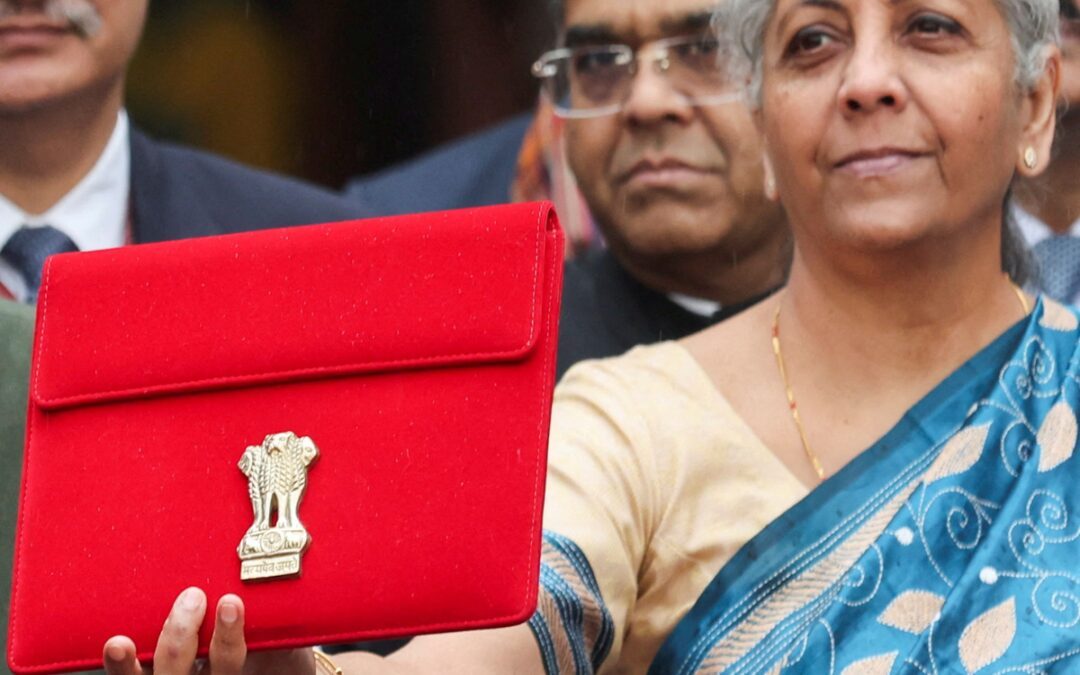Coming in the high poll season, the interim budget presented by Finance Minister Nirmala Sitharaman today is quite an unseasonal one. Sitharaman has avoided spiking her budget math with poll calculations despite the Lok Sabha elections coming up within months. In comparison with her predecessor Piyush Goyal’s interim budget in 2019 which aggressively targeted voter blocs, especially farmers, with PM-KISAN Yojna that gave Rs 6,000 annually to small and marginal farmers, and pushing up the lowest income tax limit, Sitharaman’s interim budget hinges on a conservative pivot.
Two impulses animate Sitharaman’s interim budget are: firstly, the government is confident of winning the next Lok Sabha elections and thus sees no need to shower freebies or sops on select voting blocs; secondly, Sitharaman has her eye on the fiscal deficit, the gap between income and expenditure, which was worsened by the pandemic.
Sitharaman’s fiscally conservative budget which also slows down the capital expenditure significantly, eschews from big welfare spending, banks on high GDP growth and strong tax revenue, aims at improving India’s fiscal deficit. By prioritising long-term prudence to short-term populist measures, Sitharaman has given more to India than Indians.
Budget Highlights 2024: FM’s top talking points
How Sitharaman squares off her budget book
In the past few years, the government has been building infrasstructure at a breakneck speed, and now Sitharaman has slowed down the pace. The government’s planned capital expenditure for the current fiscal year is budgeted at Rs 10 lakh crore, higher than Rs 7.3 lakh crore in the last fiscal. That was a 37.4% increase from revised estimates of 2022-23.
But in the next financial year, Sitharaman has proposed the capital epxenditure at 11.11 lakh crore, an increase of just 11.1% as against 37.4% in the previous budget.
Coupled with the absence of any big welfare spending in the budget, low capital expenditure will help Sitharaman yank the fiscal deficit down to 5.1% from 5.9% budgeted for the current year which is now estimated to come down to 5.8%. The drastic cut in fiscal deficit puts the budget squarely on the path of fiscal glidepath which would lead to a mandated 4.5% deficit in 2024-25.
Also Read| Top announcements for the common man
Gross government borrowings at Rs 14.1 lakh crore, lower than in the previous budget, aim to craete space for the private sector where investment has started looking up but has yet to catch up significantly. Lower government borrowings will mean larger availabilty of credit for the private sector.
The budget assumes nominal GDP growth of 10.5% for FY25 as against the 8.9% in the revised estimates for the current finacial year.
Sitharaman was expected to strike a balance between pre-election welfare promsies, fiscal consolidation and capital expenditure. But it seems Sitharaman has struck an aggressive posture over fiscal consolidation. Indians may not have got as much in direct benefits as expected from the interim budget but India stands to gain a lot from Sitharaman’s stance.










